Nonprofit Team Combines Faith and Technology to Conduct Underwater Search and Recovery Missions
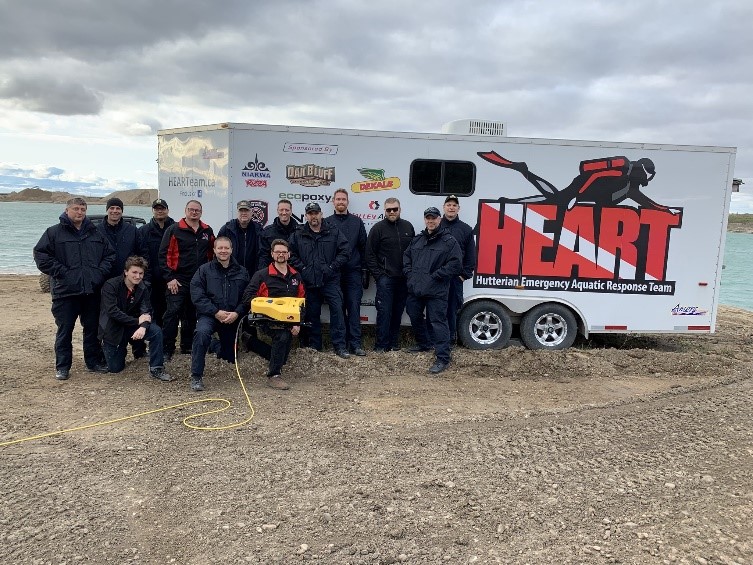
As devastating as a drowning accident is, recovering the victim can bring relief and closure to family and friends. This desire to provide help during a tragic event drives the Hutterian Emergency Aquatic Response Team (HEART), which performs underwater search and rescue missions free of charge.
Brothers Manuel and Paul Maendel operate HEART from the Oak Bluff Hutterite Colony, which is five miles east of Morris, Manitoba, Canada. The Hutterites are Christians, living in colonies located primarily in Western Canada and the upper Great Plains of the U.S. Paul is the dive team coordinator, and Manuel is the sonar specialist and ROV pilot.
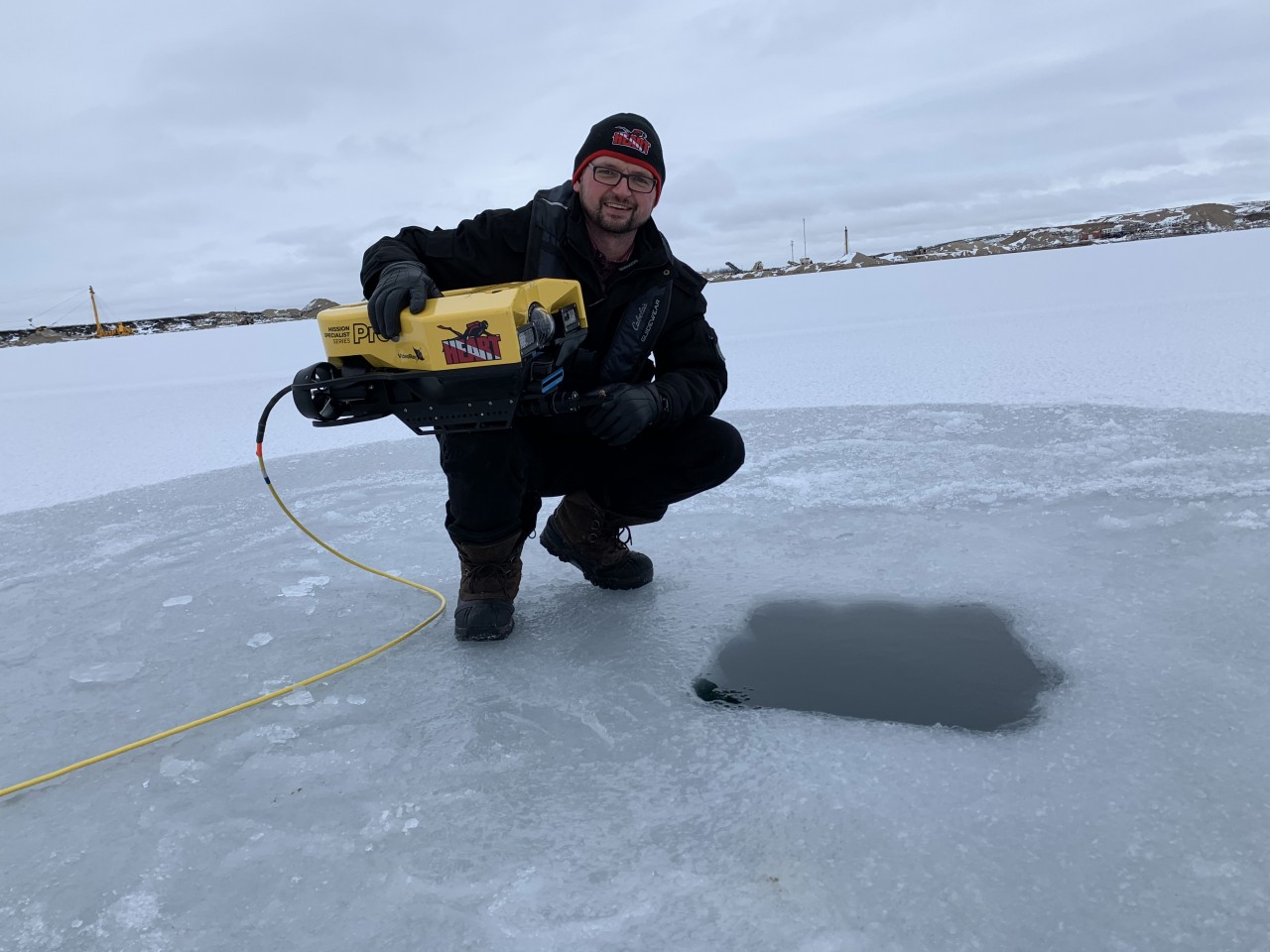
As a nonprofit, charitable organization, HEART relies on donations and sponsorships to provide the education and equipment necessary to do their jobs safely and effectively. Thanks to donors, the HEART team’s highly trained crew is outfitted with some of the most advanced dive and underwater search technology available today.
“Our calling is to ‘seek the lost,’ and the Lord guides our steps and lets us continue to grow our skills and capacity, so when a rescue call comes, we are ready,” said Manuel.
The Beginnings of HEART
Becoming an underwater search and rescue expert was not a planned career for Manuel. When he was a boy, one of his schoolteachers discussed being a certified scuba diver. Manuel was fascinated and began to read everything he could about diving. In 2006, he asked his brother Paul to train and get certified with him. They found an instructor and initially trained in an open, water-filled gravel pit on their property. The brothers became well adapted to diving both day and night in deep, black, cold water. They first applied their skills at underwater jobs like fixing pumps, repairing pond irrigation systems and recovering cars.
When a girl drowned in a river at a neighboring colony, the family asked Manuel and Paul to help. They dove down 10 to 12 feet and searched the shoreline but could not find her. Nonetheless, their effort brought peace to the community. After responding to other local drownings, they pursued training as public service divers and created HEART.
One of their first missions was north of Winnipeg to recover two bodies under ice-covered water. Because maneuvering on the ice was extremely dangerous, the police stopped the search and told the family they would have to wait until December for the ice to become more solid. That stoppage led the brothers to find an ROV.
Enter VideoRay
An online search led Manuel and Paul to Tom Crossmon, a VideoRay dealer and consultant from Duluth, Minnesota, who offered to help with the search. Tom used a Mission Specialist Pro 4 to conduct a wide-area search, and together they plotted a search matrix to create a path for the ROV to follow. The Pro 4 underwater robot and Tom’s meticulous search technique enabled them to find and retrieve both bodies, without the need for human divers.
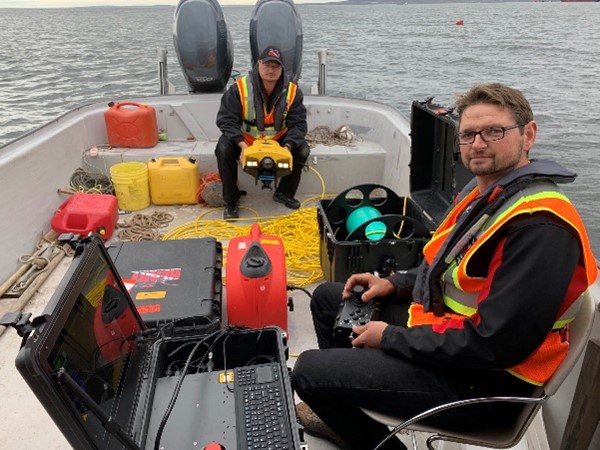
Underwater robotic vehicles are critical to search and recovery missions. Operators can transport and implement inspection-class robots quickly and easily, which helps them to enter the water as soon as possible. When equipped with sonar to navigate under water and grabber arms and tethers for retrieval, these vehicles assist or replace divers for safer operations.
After the Winnipeg recovery, Manuel and Paul worked with Tom to buy a VideoRay Mission Specialist Pro 5 vehicle for HEART. They reached out to the Hutterite colonies to help raise money for the purchase.
The Mission Specialist Pro 5 system is ideal for search and recovery missions because it weighs only 10 kilograms (22 pounds), which makes it portable and easy to deploy. Designed for speed and efficiency, it has a three-thruster system, a forward speed of 4.4 knots and can dive over 300 meters, which lets search teams thoroughly explore the water.
“We are able to deploy quickly because we only need the robot and three Pelican™ cases to hold the equipment. The footprint is so much smaller and nimbler than having to deploy a dive team,” Manuel explained.
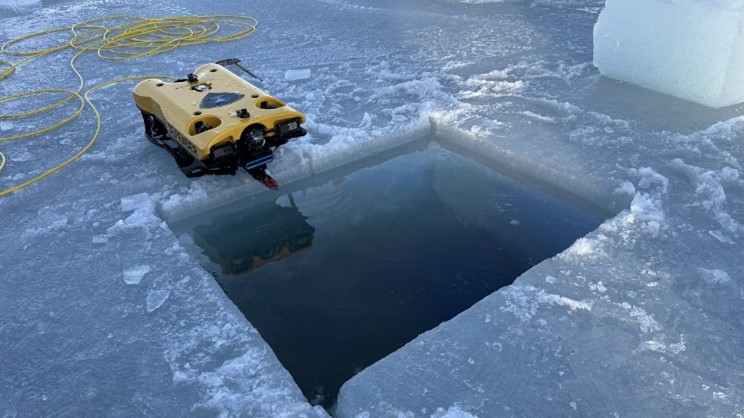
Based on some techniques they learned from Tom, the HEART team has refined and honed its search methods. One important technique is using Google Earth and handheld GPS to preplan holes in the ice to create waypoints based on how much area sonar can cover. The result is a pattern of overlapping holes to follow in the search, so the team knows exactly where to go. After defining the search region with dynamic waypoint positioning, the ROV can autonomously follow the path in a mow-the-lawn fashion.
“Each search and area are uniquely different, but even in complete blackout or dark water, watching the sonar and recognizing targets soon becomes second nature,” Manuel noted.
Within the past year, HEART has added a VideoRay Mission Specialist Defender robot to its fleet. This system has seven thrusters that can handle currents up to four knots, a 1,000-meter depth rating and can handle heavier payloads and lifting. The Defender vehicle can move in any direction and maintain active pitch and roll to move upward or downward.
Recoveries With a HEART
A recent search took the HEART team to Lynn Lake, Manitoba, to help the community in the search for a drowning victim in Cockeram Lake. Searchers had been looking for twelve days, and winter weather was quickly approaching. After a long drive, the HEART team arrived at the lake and found the search area to be almost completely frozen over. They broke the ice with their airboat to open the area for scanning. Next, they deployed their Stabicraft 2500 boat to scan the search area. Using a towed MST MKII Arc Explorer Side Scan Sonar and the VideoRay Defender ROV, they eventually located and recovered the body.
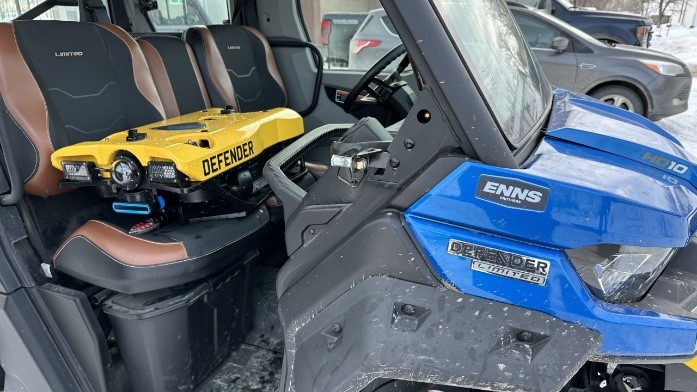
In addition to bringing dignity to victims and relief to families, HEART also teaches drowning prevention to students and trains other underwater search and rescue teams.
“HEART is too small to travel everywhere there is a need, so we gladly share our knowledge and train other SAR teams across Canada. Our mission is to help families suffering the loss of a loved one due to drowning as quickly as possible,” Manuel said.
He continued, “Our relationship with VideoRay these past four years only gets stronger as we have now recovered 15 bodies using their ROVs. It is more than business for them. We are treated as more than just a customer. We’ve developed a friendship. Support is available 24/7, which is incredibly important because a search and recovery mission can occur any time. They are there to help us through any difficulties, which is most valuable,” Manuel said. “Because of our experience, our respect for the company and products is truly genuine, and that’s why I’ve accepted the offer to become the Canadian VideoRay dealer with Hydrobotic Systems Inc.”
More Than Technology and Skill
Manuel emphasizes that HEART does not charge for its services, the team is not paid, and the community supports them to go on missions.
“We’re a faith-based team. It’s the Lord’s blessing, more than it is technology and skill. God is with this work, and we are humbled by HEART’s growth,” he added. “We have a picture of every person we’ve recovered from when they were alive. We get close to the families and feel we bring comfort.”
 CALL US: +1 610 458-3000
CALL US: +1 610 458-3000
 CALL US: +1 610 458-3000
CALL US: +1 610 458-3000  News
News





